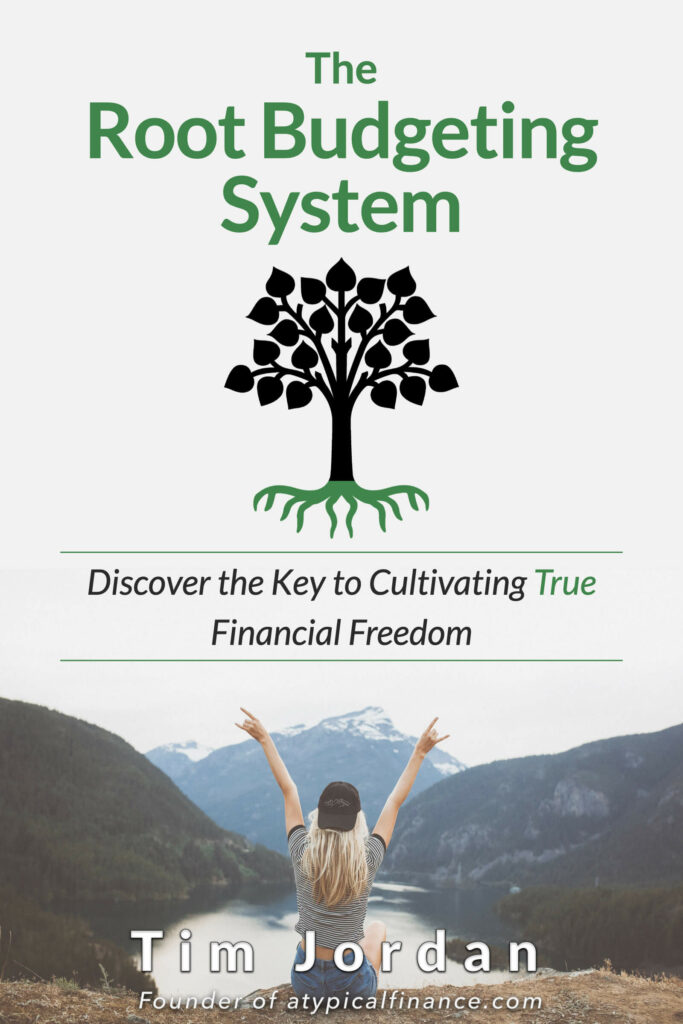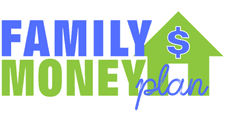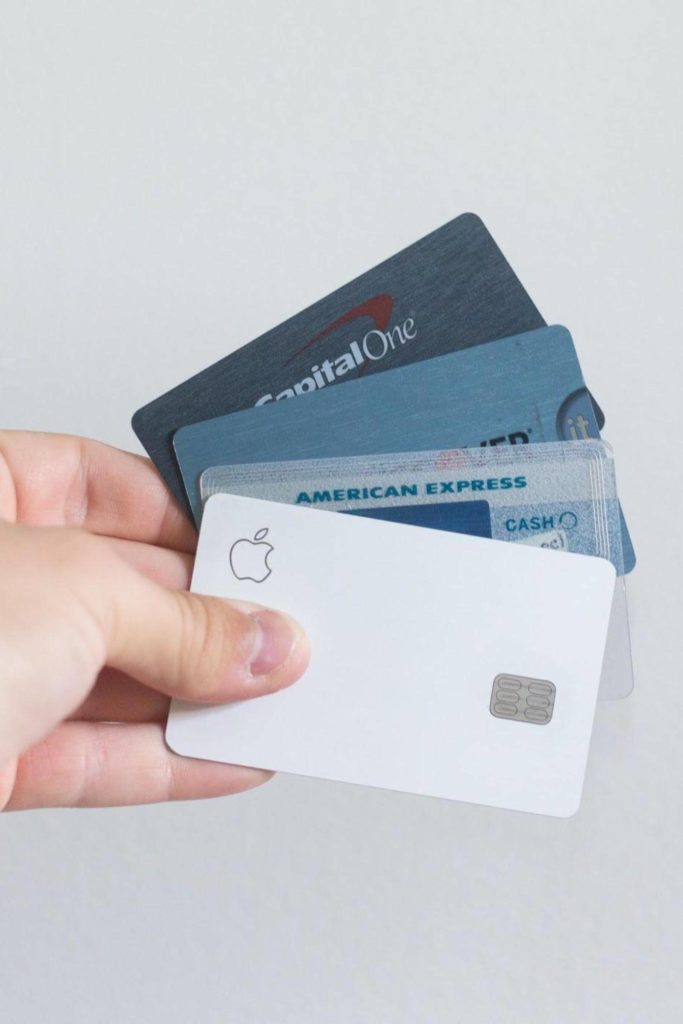Imagine for a moment that you just started a new job and you’re really excited about it.
It’s your first day, you’ve got the coordinates plugged into your GPS, and you are ready to go. It’ll take you 30 minutes to get there.
You get in your car and make the decision to start driving in the completely opposite direction for 30 minutes. Now, it’s going to take you an hour to get to work from your new starting position.
Not only that, but you have to make up that time as well. Driving for 30 minutes in the opposite direction will actually add an hour to your total trip.
So your 30-minute drive to your new job will actually take an hour and a half.
Three times as long!
Does this sound like something anyone would ever do?
Yet in our finances, we seem to do this all the time. We set financial goals, try and stick to a budget (Amazon Link), and then make decisions that take us in the opposite direction first—me included.
It’s something I’ve experienced several times in the past, and I’m still not perfect (is anyone?).
Your destination in your finances could be retirement, early retirement, paying off debt, saving up for a vacation or downpayment on a house, or even complete financial independence.
The destination can look different for everyone, but we all are susceptible to making the same mistake of going in the opposite direction of our goal first before we start heading toward it.
The Opportunity Cost of Unnecessary, Interest-Bearing Debt
Debt is the biggest way we go in the opposite direction first.
When you are trying to build toward your financial goal, any unnecessary, interest-bearing debt is taking you straight in the opposite direction.
There is something in finance called the “Opportunity Cost.”
Opportunity cost is defined as the loss of potential gain from other alternatives when one alternative is chosen.
In other words, a decision made could cause you to miss an opportunity that could have happened if you made a different decision.
Opportunity Cost is commonly mentioned when putting cash in savings rather than investing.
By stashing money in an online savings account at 2% interest, you are losing out on the opportunity to make a higher interest rate by investing.
The opportunity cost is even greater with interest-bearing debt.
Why? Because you aren’t just missing out on the interest you could have made investing that money.
You are going in the opposite direction and paying interest instead of making it.
So how do you figure out the true cost of your debt?
The True Cost Calculation
In order to find the true cost of your debt, you have to take the interest rate you are paying, and add it to the interest rate you could be making.
For example, if you are paying a debt with a 4% interest rate, and you could be making an average of 4% in the long run by investing that money instead, the true cost you are missing out on is 8% interest.
Not only are you paying out 4% to someone else, but you are losing the opportunity to make 4% as well.
Let’s take that same calculation and use an online savings account with a guaranteed 2% interest rate.
In this instance, your 4% interest rate on your debt plus the 2% you could be making adds up to a total true cost of 6%.
What happens when that debt is on a credit card with an average 16% interest rate?
Even only using the 2% interest-bearing online savings account, you’re missing out on 18% of what you could make simply by paying the credit card company 16% of your purchase annually!
As you can see, it’s a much higher cost of debt than just the 4% you are paying to someone else.
The True Cost in Round Numbers
Let’s look at the credit card scenario above in dollar amounts.
Say you charged $1,000 to a credit card and pay the minimum payment of $20 until it’s paid off.
It would take you 83 months to pay it off and you’d be charged $658.89 in interest.
Your original $1,000 purchase is actually costing you $1,658.89.
But that’s not your true cost because we’re missing the other piece.
What if you parked that $1,000 in an online 2% interest-bearing savings account?
Even without adding any money to it, after 83 months your new balance would be $1,148.23. You would earn $148.23 in interest by not doing anything.
So your true cost of that $1,000 purchase in debt is actually $807.12.
By having interest-bearing unnecessary debt, you are paying someone else interest and missing out on making your own.
But What if…?
Now, what if you have some debt, can afford the monthly payment, and decide to start investing money instead of paying down your debt?
There is definitely still a cost of your debt involved in that situation.
For example, if you have a low-interest personal loan at 5% interest, and are investing with an average return of 7%, you are essentially losing 5% of your interest gained.
This means that you are only earning 2%! That is the same amount as an online savings account.
Much less than the full 8% if you didn’t have that debt.
Unfortunately, a true apples-to-apples comparison would include way too many variables and would depend on your personal situation.
However, if you are in this situation and want to figure out the actual cost, you can take the actual interest dollar amount earned from your investments and subtract the interest dollar amount you paid from what you earned.
This will give you the cost of you holding on to your unnecessary, interest-bearing debt.
Monthly Payment Opportunity Cost
There is one more opportunity cost to consider as well—your monthly payments to your debt could be going into savings or investing instead.
Let’s take that same $1,000 savings amount and add $20 monthly “payment” for the same 83 months—the same payment we’d be putting toward our debt on the credit card to pay it off.
Now, instead of having $1,148.23 after 83 months, you have $2,929.90
That is a huge difference simply by being able to make a $20 payment to yourself in your savings account rather than to the credit card company!
The more debt you acquire, the greater the true cost grows, and the farther it can take you away from your goals.
5 Ways to Avoid Unnecessary Debt
So, practically speaking, the best way to avoid lengthening your trip to your financial goal is to avoid unnecessary debt. I realize, though, that taking on unnecessary is sometimes unavoidable.
That being said, much like turning the wheel to avoid a pothole, there are some things you can do to avoid the need to take on unnecessary debt.
Here are five ways to avoid unnecessary debt.
1. Plan for Unexpected Expenses
Having an unexpected expense is a prime time to dip into an emergency fund. But did you know that there are things you can plan for so they aren’t so unexpected?
A lot of times, things like a car repair or minor home repair are considered unexpected. If you think about it, though, these things are going to happen at some point.
They should absolutely be expected and built into the budget.
I’ve personally experienced the power of planning for unexpected expenses.
Last year, I had an “unexpected” car repair bill that was about $350 more than I thought it was going to be because they couldn’t repair a leaky tire. The total bill was $486.10.
The nice thing was that because we were already setting aside a set amount per paycheck for car repairs, we already had $432.50 available for the repair!
I only had to come up with another $53.60 to pay the bill.
At that point, even if I did have to dip into our emergency fund, that wouldn’t affect it much.
Some other things you can plan for besides car repairs and minor home repairs are medical expenses, yearly expenses, and birthday or holiday gifts.
With unexpected expenses taken care of, you can leave your emergency fund for actual emergencies.
Speaking of…
2. Have An Emergency Fund
An emergency fund is what I consider one of the three pillars of budgeting.
It’s something everyone needs.
But the amount you need might be different from someone else’s amount depending on your life situation. It’s best to figure out exactly how much emergency fund you need and then learn how to build it quickly.
Some emergencies that an emergency fund is perfect for are:
- Job loss
- Medical emergency
- Major household repairs
- Major car repairs
There isn’t a ton for the emergency fund to take care of, honestly. Most things can be planned for.
The emergency fund is a great layer of extra protection for major things that may be out of your control.
3. Live Beneath Your Means Consistently
One of the best ways to avoid unnecessary debt is to have a cashflow cushion every month that you can pull from if something happens.
To get there, you’ll need to consistently live beneath your means.
Where does your current income sit compared to your monthly costs? Are your bills sitting right at the ceiling of your income?
If you live below your means consistently, you should have at least some cash flow every month that can go either toward savings or paying off debt. This is where the cushion comes from.
If something happens and you have a small emergency, it’s simple to just pull from what you would normally save or use toward debt to get it taken care of.
You won’t need to worry about derailing your get out of debt train because you’re not taking on new debt.
And since you’re living below your means consistently, it won’t do much to your savings rate. You’ll be back at it again next month!
Another way you can begin living below your means is to spend money only on what you value.
As Ramit Sethi says, “It’s about being able to spend more on the things you love by not spending money on all the knucklehead things you don’t care about.”
Cutting your spending on what you don’t value should be pretty easy, and it will leave you that cushion of cash flow every month in case of emergencies
You can also watch out for lifestyle inflation and even reverse it if you’ve found unnecessary lifestyle inflation in your own life.
If you can train yourself to where living below your means is natural, it’s much easier to maintain, and you won’t have to take on any unnecessary debt when something comes up.
4. Stop Comparing Yourself to Others
It’s really easy to see someone who has a bunch of nice things and assume that they are doing well financially. But that doesn’t paint the whole picture.
What you don’t know is how much they have saved for retirement or if they’ve paid off their debt. Consider that all of their nice things might be a result of thousands of dollars of debt.
The point is that you just don’t know so you shouldn’t compare yourself to them.
The only person you should compare yourself to is who you were previously.
Comparing yourself to others financially always leads to one thing—spending on unnecessary things.
It’s a “keeping up with the Joneses” situation, and when that happens, we usually compare ourselves using one metric—stuff.
“Wow, look at that car! It’s way better than mine.” or “This person has all the toys!”
In the realm of “stuff,” sometimes you improve by getting rid of some things. This is the exact opposite of getting more so you can be similar to some other person.
In reality, who you are is everything you need. Compare yourself to who you were.
Spend money on the things you value. Examine yourself and ask “what do I need” rather than wanting something because someone else has it.
And remember, you are perfect just the way you are.
5. Don’t Finance More than Your Monthly Cashflow
This is something I used to be so guilty of—and I’m still working on paying off over $12,000 in debt because of it.
There are times when you might get a credit card offer in the mail or see a store credit card advertising for an interest-free promotional period. It’ll say something like “0% interest for 18 months” or a different length of time.
These are ok to use—I repeat, these are ok to use—if you meet one condition.
The maximum dollar amount you can borrow on these types of offers should not exceed your monthly cash flow amount.
This is the exact same condition I put in place for myself and it has worked wonders for me.
For example, if your monthly cashflow—the money you have extra each month—is $1,000, you would be safe putting $1,000 on an interest-free credit card.
If you only have $200 in cash flow per month, you are only safe to put $200 on an interest-free credit card.
This will do two things for you:
- It ensures that you are able to handle the monthly payments. Your payment will always be under the extra cash flow money you have each month.
- It guarantees that if an emergency happens, you’ll be able to pay off the balance in one month’s time. In almost all cases, you’ll be able to pay the credit card off early whether you want to or need to do it.
Now, this does still take discipline so make sure you are able to handle it before doing it.
I was not able to handle it until about a year ago, which is exactly why I still have more than $12,000 in credit card debt.
Final Thoughts
It’s clear that there is a huge opportunity cost to unnecessary debt.
Driving in the opposite direction of your goals, even for a small distance, can add more time to your journey than you realize.
This isn’t even counting what debt can do to your mindset and motivation to do anything with your finances or the fact that it can even limit your career options.
Take a minute to figure out the true cost of your debt. Is it higher than expected? Lower than expected?
Make whatever changes you need to make in order to arrive at your financial goals when you want to arrive.


















